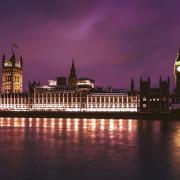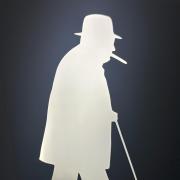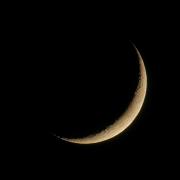
This year marks the 20th Anniversary of ‘Romeo + Juliet’, directed by Australian film director Baz Luhrmann (who also produced a 2013 screen adaptation of F. Scott Fitzgerald’s 1925 novel, The Great Gatsby , featuring Leonardo DiCaprio in the title role) released November 1, 1996 (USA). The American romantic drama film features Leonardo DiCaprio and Claire Danes as our ‘star-crossed lovers’ in a modernised literary adaptation of William Shakespeare’s famed 1597 tragic play, ‘Romeo and Juliet’. This abridged adaptation depicts an ‘MTV’ vibed, innovative, vigorous ambiance, set in the fictional town Verona Beach, Venice Beach, Los Angeles. It establishes two rival mafia empires, the Montagues and the Capulets, with swords replaced by guns, specifically pistol brand names to keep the same naming within the script (‘swords’ and ‘daggers’). The film’s success proves fruitful, with a worldwide gross of $147,554,988 USD, and despite the film having mixed reviews, has become considered a cult classic by many, especially within its recent years.
But why do modernised adaptations match so well with audiences?
They enable the ability to recite these classic tales within literature, conveying the morals and significant themes within the narrative; in the tale of Romeo and Juliet, the themes of love, fate and conflict are predominant and still relevant today, hence why the plot is suitable within modern society, as the audience can connect to the message. Luhrmann fuses Shakespearean language with the energetic vibrancy of today’s society, utilising Shakespeare’s original scripted work whilst presenting a hyper-visual spectacle. Whether you’ve read the book or not, everyone is able to watch the story through these adaptations.
The prominent prologue, “Two households, both alike in dignity/ In fair Verona, where we lay our scene…” , is presented in the adaptation through the format of a news bulletin, an urgent broadcast with the news reporter taking role as the Shakespearean chorus: vivid imagery and flashing typography provide an intense opening which entices the audience. This rejuvenation appeals to a modern audience, offering a unique perspective and being significantly more engaging. As a student, I find it is significantly helpful when studying texts, and throughout my education modern adaptations of classic literature has aided my perception of the texts, with visual imagery developing my understanding of key features. For instance, within the film Romeo’s knight costume at the party conveys his chivalrous, brave persona, and Juliet’s angel represents the purity and innocence. Not forgetting to mention Luhrmann’s amplification of religious imagery- which isn’t exactly subtle.
The sheer power of creativity is shown through literary adaptations, producing compelling television dramas. The BBC aired a series of Shakespearean adaptations, ‘ShakespeaRe-Told’ which includes a retelling of Macbeth, set in a three Michelin star restaurant, replacing the three witches with mystical binmen- a dramatic rendition which was certainly not rubbish!
BBC drama, ‘Sherlock’, has its audience looking for clues on the next series premiere, highly anticipating for its 2017 release. The series recently featured the cast in a New Year’s special, embodying Sir Arthur Conan Doyle’s renowned detective in his Victorian setting: including full period costume, set and language. The special drew 8.4 million viewers to BBC One, showing that despite the growing demand for revitalised literature, there is also an authenticity for traditional adaptations.
Whether you they’re in your ‘good books’ or not to your taste, modernised adaptations offer the ability for everyone to watch the basis of the tale and appreciate the literary works, as well as showcasing new, innovative ideas, expanding film and television.
Patryce Richter, St Philomena's Catholic Highschool for Girls



























